How to Redirect a Downspout
Simple Downspout Redirection
Redirecting roof runoff is as simple as adding a downspout extension. These are plastic (PVC) or metal extensions that attach to the bottom of your existing downspout. The extension should carry your roof runoff at least three to five feet away from your home to prevent any water damage to your home or foundation. Keep in mind that not all sites are well suited for simple redirection. If your lawn is small compared to your roof, or if the slope of your lawn is too steep, consider installing a rain barrel or a rain garden instead. (Redirecting your downspout into your neighbor’s basement is also not recommended.)
Direct-Piping Downspout Redirection
Some homes have a downspout that is directly connected to the storm drain system. This direct piping can be altered and redirected by cutting the existing pipe and then installing a downspout elbow and extension.
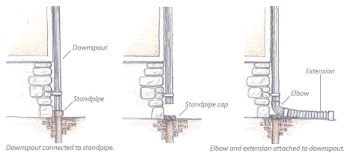
The materials to redirect your downspout cost about $30 or less, and the tools required are common: hacksaw, drill, pliers, tape measure, and screwdriver.
Note: Before beginning, you should have the proper safety equipment to prevent accidents—in this case, protective goggles and gloves.
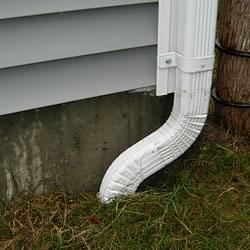
1. Cut the end of the existing downspout
Using a fine-tooth hacksaw, cut the end of the downspout so that it ends approximately 9 inches above the standpipe. Remove the cut piece from the area.
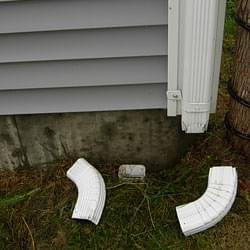
2. Cap the standpipe
If you are redirecting a downspout that was directly connected to the storm drain system with a standpipe, you will need to cap the top of the existing standpipe. Use a plug with a wing nut or an expansion plug or cap.
3. Attach the elbow
Attach the elbow to the cut downspout by placing it over the end. To ensure a good fit, use needlenose pliers to crimp the downspout. Secure the elbow to the downspout on either side with sheet metal screws. The screw holes may need to be pre-drilled.
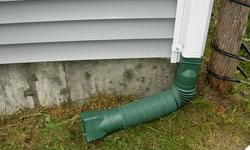
4. Install a downspout extension
Attach the elbow into a downspout extension which is made of the same material as your downspout. Slide the extension over the elbow and secure it using sheet metal screws.
- Downspouts should drain at least five feet away from your home
- The end of your downspout should be at least five feet from your property line and possibly more if your yard slopes toward neighbor’s property
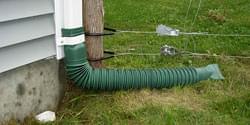
You may also consider using a splash block at the end of the downspout extension, which will help prevent soil or lawn erosion. Splash blocks can help direct water into rain or rock gardens.
Additional Resources for Downspout Redirection
The City of Portland, OR has developed a downspout redirection brochure that contains a variety of helpful information including how to determine the slope of your lawn and whether your lawn is large enough to absorb your roof’s runoff. Keep in mind that the sizing standards and recommended setbacks are specific to Portland. Contact your local municipality if you have questions about sizing or setbacks.
EPA Webpage on Green Infrastructure
Mid-America Regional Council Environmental Programs Downspout Redirection Instructions